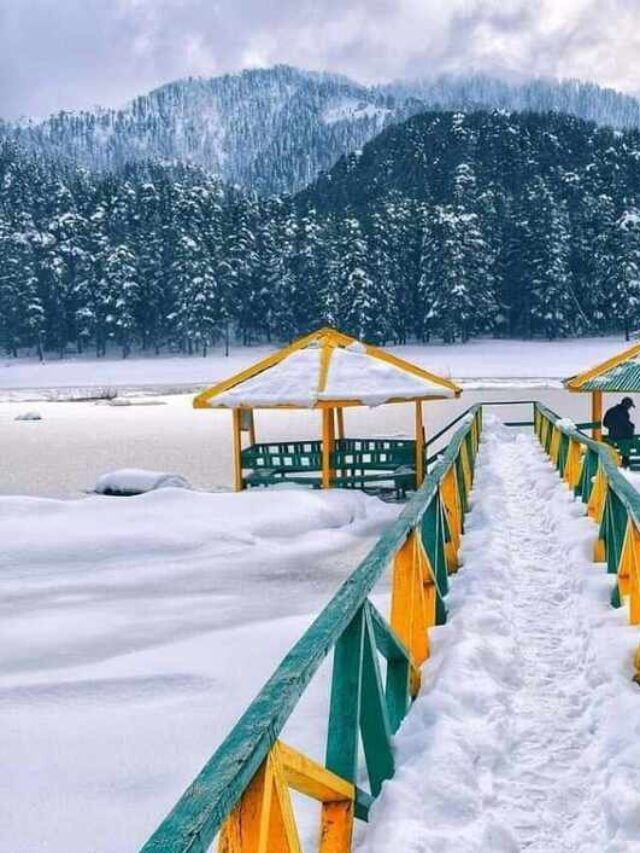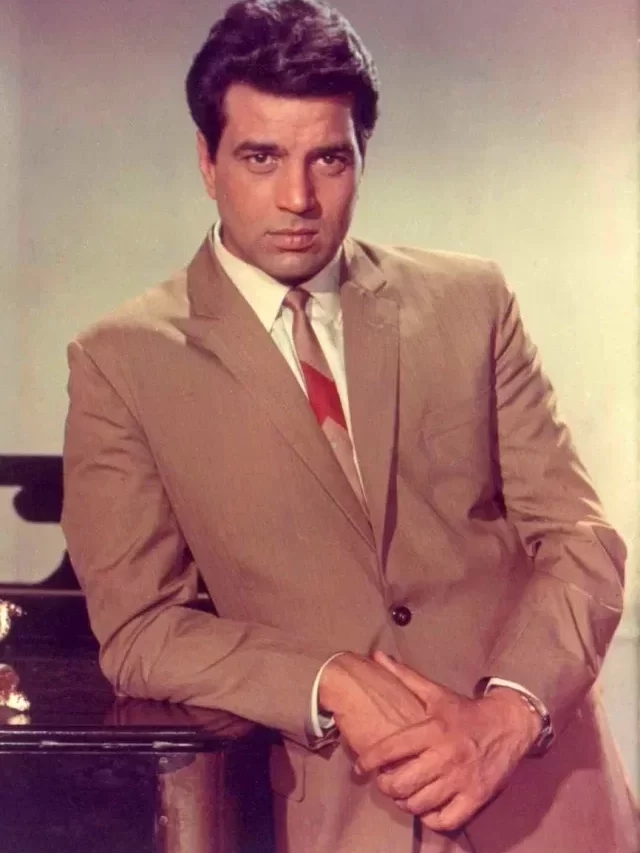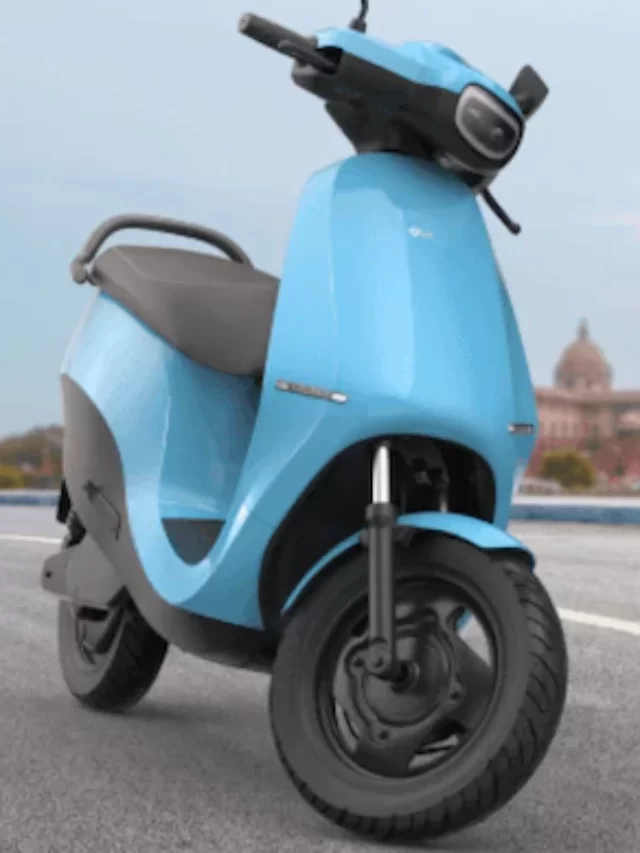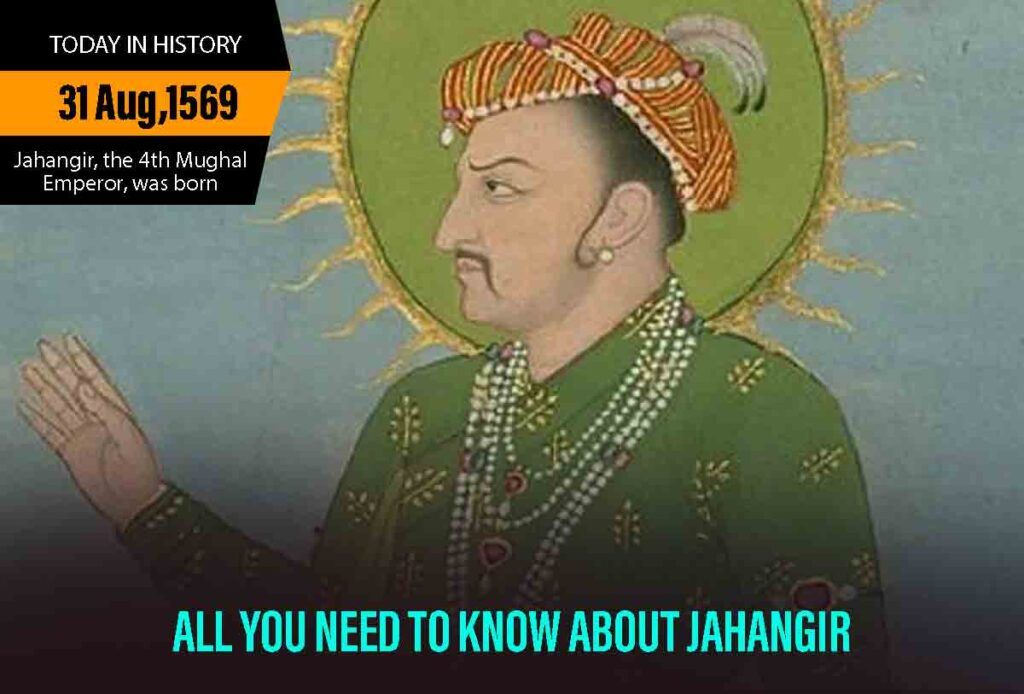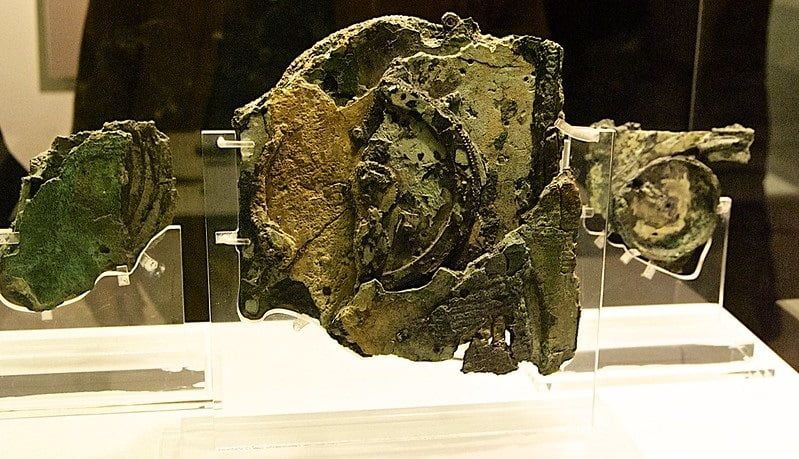The eldest son of The Great Akbar and the beautiful Hindu Queen Jodha Bai, Nur-ud-din Muhammad Salim was the fourth Mughal Emperor of the Mughal Dynasty and considered one of the bravest Mughal emperors in the golden history of India! Born on 31st August 1569 in Fatehpur Sikri, the brave king Jahangir Mughal emperor succeeded his father Akbar in 1605 and ruled the Mughal empire till his death in 1627. Later, Salim renamed himself ‘Jahangir’, which means ‘Ruler of the Universe’. But, how was the ruling period of Jahangir? Was Jahangir a good ruler? How was the overall Jahangir Mughal empire? What were Jahangir achievements during his reigning period as the fourth Mughal king? This article will take you on a journey through the historical era of the great Mughal dynasty and will give you a sneak peek into the life history and achievements of the Mughal emperor Jahangir. Besides, this article will discuss in detail how his rulings had a great impact on the Mughal kingdom! Read below.
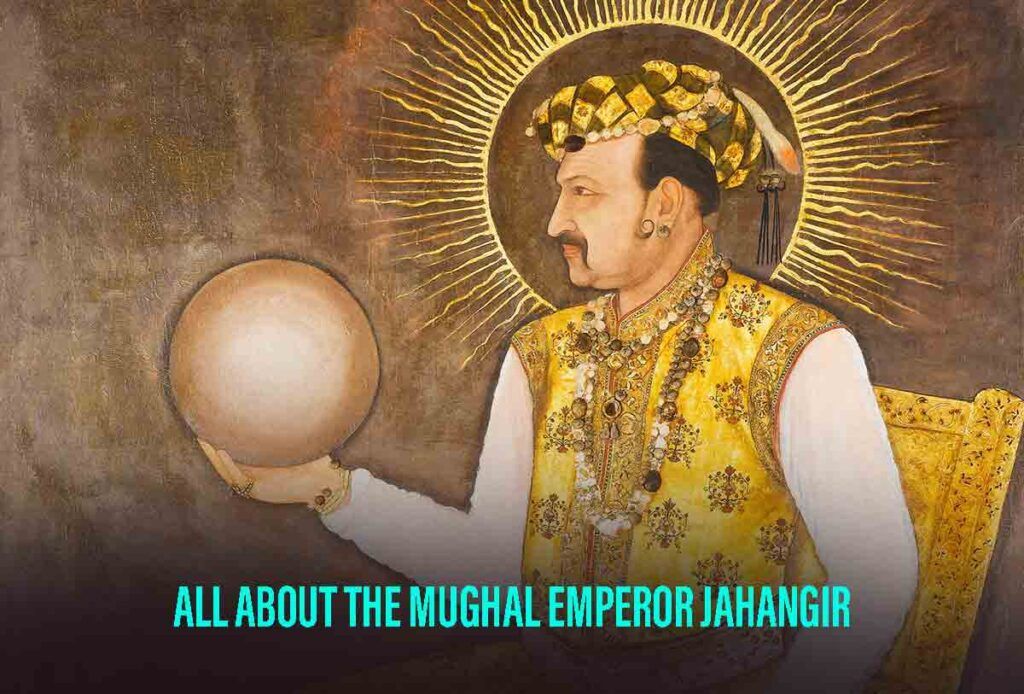
All About The Jahangir Mughal Empire
31st August 1569 – The birth anniversary of Jahangir, originally named Nur-ud-din Muhammad Salim, was the 4th Mughal emperor and ruled from 1605 until his death in 1627. But, who was Jahangir Mughal emperor? Was he really into Anarkali as has been showcased in the Indian cinemas? Read the section below to know more.
Who Was Jahangir Mughal Emperor?
Born to his father Akbar and the Hindu princess of Amber, Jodha Bai, Prince Salim was the fourth ruler of the Mughal dynasty after his father’s death in 1605. Much like his father the Great Akbar, young Jahangir was also trained in military tactics and fighting strategies. Grown up in close proximity to Akbar the Great, his son Salim too was a true believer in secularism. Though he was a true Muslim and had blind faith in Allah, he never looked down upon other religions. In his rule, all religions enjoyed the same status, much like his father’s. Though the Jahangir Mughal emperor concentrated more on expanding the Jahangir Mughal empire, the great ruler also had a classic taste in art.
Legends say that he used to assign artists to paint floral designs and pictures of mountains, some of which are still on display at London’s British Museum. Later, due to old age and growing infection in his body, the great ruler died and was later succeeded by his son Prince Khurram, also known as Shah Jahan who later became famous for his great work of art and architecture, the serene beauty, Taj Mahal which was dedicated to his late wife, Mumtaj.
Also Read- History, Story And Real Facts About Taj Mahal And Mumtaz Mahal
Jahangir’s Birth History And Controversial Personal Life
When Was Jahangir Born?
The eldest son of Akbar, Jahangir was born on 31st August 1569 in Fatehpur Sikri, who was named Nur-ud-din Muhammad Salim after Sheikh Salim Chishti.
As the legends say, soon after his marriage to the Hindu princess Jodha Bai, the great Akbar wished for an heir to his throne. But, to his unfortunate destiny, all his children died at infancy. Thus, in his last hope, he paid a holy visit to Sheikh Salim Chishti, a holy person who resided in Fatehpur Sikri.
The holy man later predicted that the benevolent king would have three children who would live through ages. Soon after the news of his eldest son’s birth spread throughout the kingdom, the king named the little boy Salim, in memory of the holy man Sheikh Salim Chishti.
The Love Life Of Jahangir Mughal Emperor
The Mughal Emperor Jahangir And Anarkali – A Classic Piece Of Fiction
If you are a Bollywood movie fan, you must be aware of the classic movie, Mughal-e-Azam which showcased the divine love between Jahangir and Anarkali, who was a courtesan in Akbar’s court But, this is just a classic fictional content as there is no record of any such love story between the two.
Who Was Jahangir’s Wife? How Many Wives Did He Have?
The most beloved wife of Mughal emperor Jahangir was Mihr-un-Nisa, who was later awarded the title of Nur Jahan ( light of the universe) for her eternal beauty and gorgeousness.
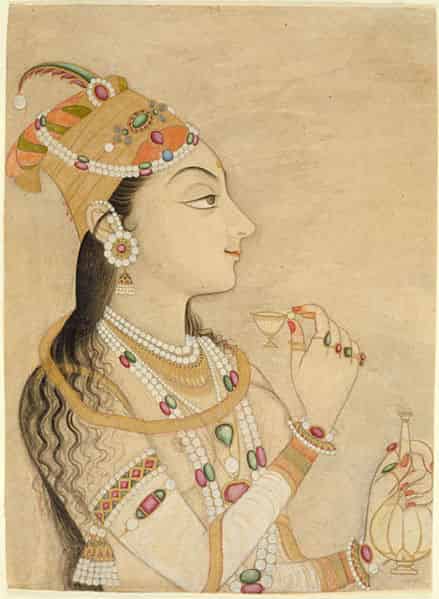
But, it is said that similar to his father Akbar, Jahangir Mughal emperor too had many wives. While some were from his own religion, others belonged to different religions and castes.
20 Wifes Of Jahangir
History hints that the Jahangir Mughal emperor had married 20 times! While some were very personal, others were based on Mughal politics. In the year 1585, young Jahangir was engaged to Mai Bai, princess of Amer, who was a maternal cousin to the groom. Jahangir had a son named Khusrau Mirza from his first wife who later went against his father to capture the throne.
Soon in 1586, the Mughal emperor Jahangir tied the knot with Jagot Gosain, the daughter of Udai Singh. The wedding was based on politics as after being defeated in the battle with the Mughals, Udai Singh promised to give his daughter to the Mughal emperor as a sign of loyalty to the King. Jahangir had another son with Jagot Gosain, who later came to be known as Prince Khurram or Shah Jahan. It is said that Shah Jahan was among the favourite sons of Jahangir.
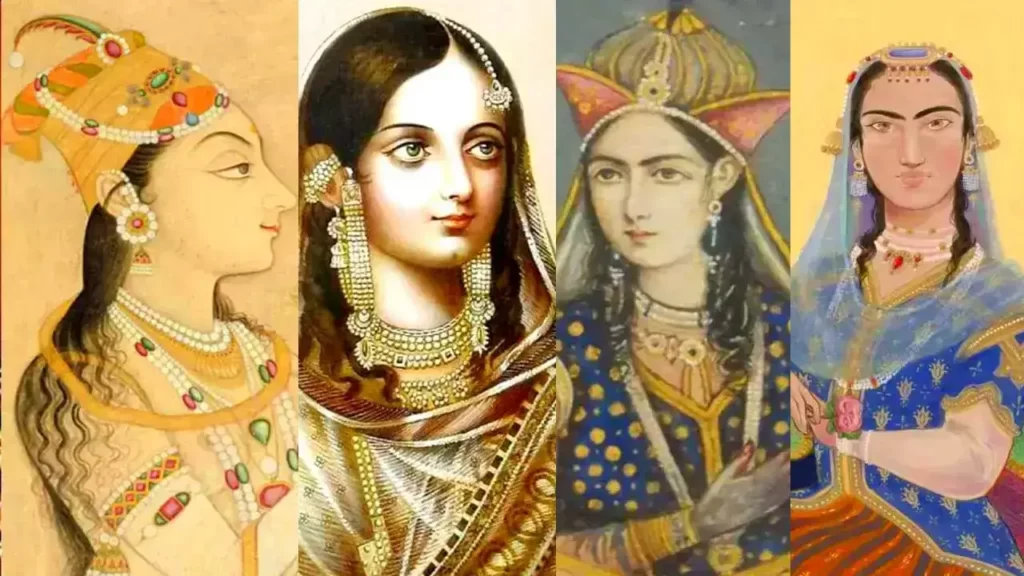
Later in 1586, the great King married Malika Shikhar Begum of Kashgar, followed by another woman who was known as the daughter of Raja Rai Singh. Later, Jahangir united with Sahib Jamal who gave birth to a son named Sultan Parvez. Again, Jahangir married another Rajput princess named Malika Jahan. Adding to his list of wives, Jahangir tied the knot with Zohra Begum followed by Karamnasi Begum.
In the year 1592, Kanwal Rani became the queen to the King who then again married the daughter of Hussain Chak of Kashmir. The year 1596 saw another marriage of Jahangir to Khas Mahal. In the year 1608, Jahangir was wedded to Koka Kumari, daughter of Prince Jagat Singh, followed by his marriage with Saliha Banu Begum. His twentieth wife was Nur Jahan who was his most beloved. The beautiful queen was very witty and courageous. She had a great influence on the King and finally went on to gain a prestigious position in the politics of the Jahangir Mughal empire.
Also Read- The List Of Mughal Rulers In India – The History Of Mughals And Mughal Empire
The Ruling Period Of Jahangir – An Account Of Jahangir Achievements
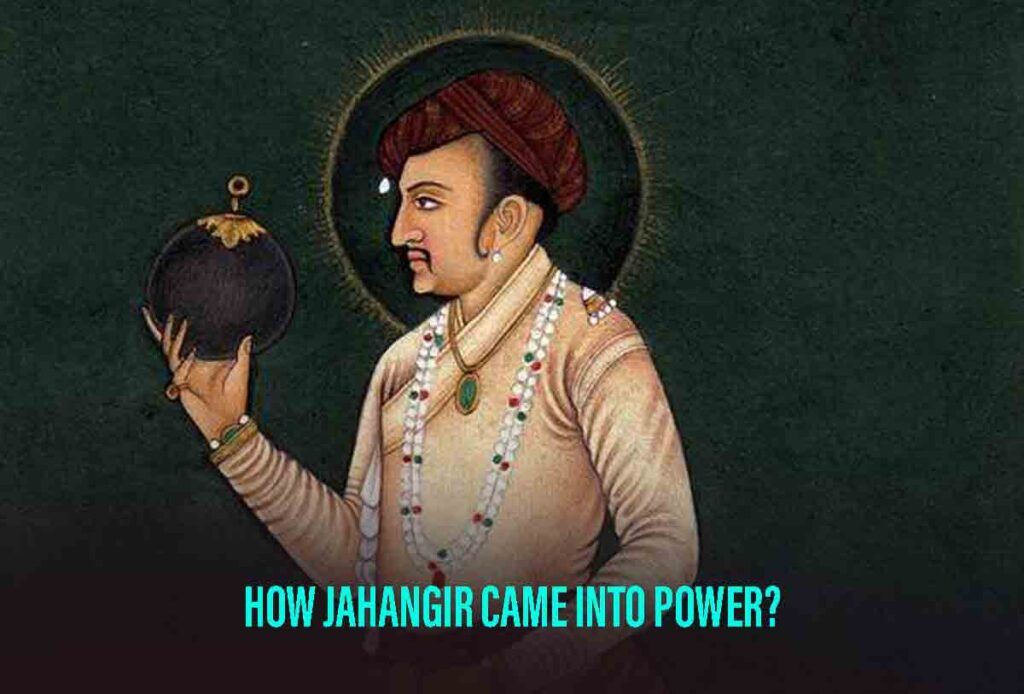
How Jahangir came into power is a fascinating story in itself! Legends have it that young Jahangir, much like his predecessors, was hungry for the throne. So much so that the young Prince had revolted against his father but was largely unsuccessful in his mission. Failing in his first attempt, the young prince again attempted to hold a revolt against the Mughal emperor but faced brutal failure. But, destiny had different plans for the Mughal dynasty.
The year was 1605. Akbar was on his deathbed. Fearing his death, he declared his son Jahangir the next ruler on the throne. While Jahangir’s admirers were happy, others feared that an opium-addicted person is not the right fit to rule the kingdom. Even his own son, Khusrau Mirza went against him and revolted to gain the throne! But, after being crowned as the King of the Mughal dynasty, the Mughal emperor Jahangir defeated his son and later hanged Khusrau to death!
The ruling period of Jahangir has seen many ups and downs. While he was able to capture many kingdoms and forts which was once the dream of Akbar, there were many, like Southern India, which could never be merged fully with the Mughal dynasty. In his initial phase, Jahangir went on a mission to capture Mewar in Rajasthan. Though faced with failure in his first attempt, the fourth Mughal emperor managed to capture the region in his subsequent attack, with the help of his son Sultan Parvez.
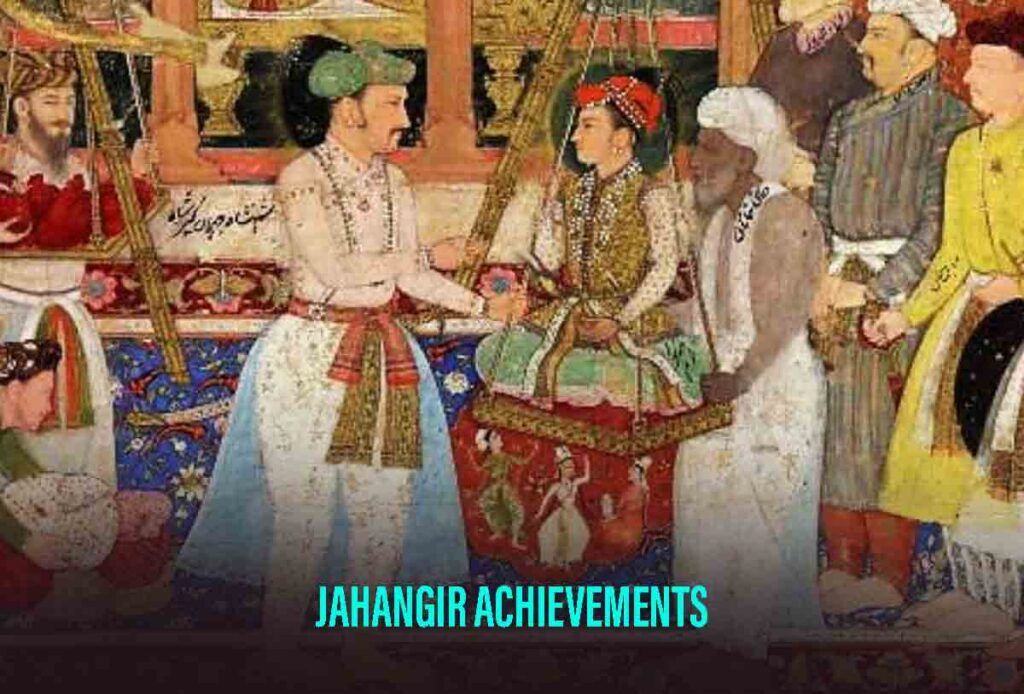
The second kingdom in his list of attacks was Southern India. But, unfortunately, he could never capture the whole of South India. Parts of Southern India such as Golconda, Ahmednagar, and Bijapur could never be merged under the umbrella of the Mughal dynasty. Soon, a peace treaty was signed between Jahangir and the Wazir of Ahmednagar, which resulted in giving away the territory of Balaghat to the Mughal dynasty.
Apart from expanding his territory, art and architecture also saw exponential growth and development during the ruling period of Jahangir. Besides the great works of art by Indian artists, Jahangir was also interested in European paintings which paved the way for the Britishers to strengthen their base on Indian soil. The autobiography of Jahangir, ‘Jahangirnama’ consists of many paintings depicting his life and the socio-political atmosphere of the Mughal kingdom during his rule.
Was Jahangir A Good Ruler?
Despite his literary works and military talents, was Jahangir a good ruler? Well, there is no definitive answer to this. While many believe that he was indeed a benevolent and noble king who accepted all religions in his dynasty and worked tirelessly to provide justice to his people through the famous ‘Chain Of Justice’, others hold the view that he was a cruel king.
His controversies with the fifth Sikh Guru, Guru Arjun Dev, earned him much defaming. Jahangir Mughal emperor also later beheaded Guru Arjun Dev which made many people hate him. It is also said that he was addicted to opium and drugs since his childhood. So much of clashes were common between him and his father Akbar regarding his addiction!
How Jahangir Died?
During his last years as the Mughal Emperor, Jahangir saw his kingdom being destroyed slowly at the hands of the Britishers. With the entry of the Britishers on Indian soil, they worked effortlessly to strengthen their base in India. In such a situation, when the Britishers were going strong with their oppression, a plague broke out in the country. Feared to have been affected by the disease, Jahangir fled to Fatehpur Sikri, but later he showed signs of physical weakness and infections.
While Khurram rebelled against his father’s rule to gain the throne, Jahangir in the fear of death attempted to escape to Kashmir. It is said that while travelling from Kashmir to Lahore in 1627, Jahangir left for eternity. The King was later buried in Shahdara Bagh. Prince Khurram, aka Shah Jahan, was then ascended to the throne as the new king.
Conclusion – The Mughal Emperor Jahangir
While it is true that the Mughal Emperor Jahangir was a perfect fit for the crown, some of his decisions led to his downfall. His addiction to opium and too much trust in his queen Nur Jahan led him to his destruction and ultimately the weakening of the Mughal dynasty.
FAQs
Did Jahangir kill Akbar?
Akbar died of old age. There is no historical evidence that Jahangir killed his own father. But, the historical record hints at the fact that young Jahangir had a bitter relationship with his father. He even revolted against Akbar at an early age to capture the throne but later, the father-son duo reconciled!
Was Jahangir a good ruler?
Yes, Jahangir was a good ruler except for the fact that he was cruel to the Sikhs. Though he was a believer of secularism, he had conflicts with the fifth Sikh Guru, Guru Arjun Dev, who was later beheaded by the emperor. Besides, his addiction to drugs and alcohol also made many in his kingdom hate him. But, it is also true that in his reign, art and culture saw a new direction of growth and development. The Mughal dynasty also expanded its territory during the powerful reign of Jahangir.
When Jahangir died?
Jahangir died in 1627 during his return journey from Kashmir to Lahore. He had developed infections and weakness by that time, which later cost him his precious life.
What was Jahangir famous for?
Though Jahangir is generally known for his tolerance towards other religions and his love towards art and architecture, he is particularly famous for his ‘Chain of Justice’. The chain of justice was situated outside the Agra Fort which was further attached to 60 belts. Legends say that any person ringing the bell could connect a link with the Emperor and thus, he was entitled to be granted a personal meeting with the Emperor!
For more related articles, Visit Discover
